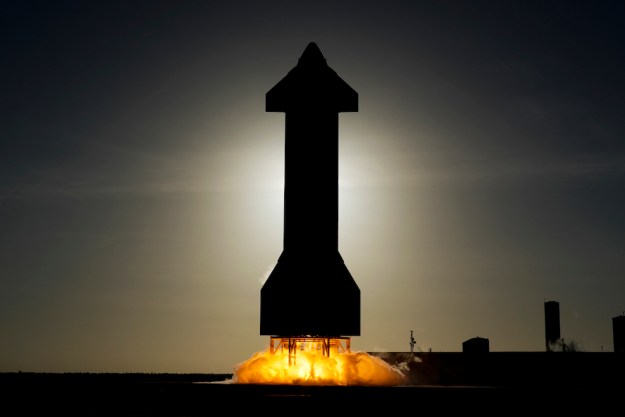Starship's Flight Readiness: Overcoming Recent Setbacks

Table of Contents
Analyzing the Recent Starship Launch Failures
The development of Starship, a fully reusable spacecraft designed for transporting both cargo and passengers, is an incredibly complex undertaking. Setbacks are an unavoidable part of this iterative process, but learning from them is crucial.
The Importance of Thorough Testing and Iterative Design
SpaceX's approach to Starship development emphasizes rapid iteration and a "test and learn" philosophy. Each test flight, even if it ends in a partial or complete failure, provides invaluable data for design improvements.
- SN8, SN9, and SN10: These early Starship prototypes demonstrated crucial advancements but ultimately failed during landing attempts due to various factors, including engine issues and insufficient propellant reserves. Analysis of these failures identified critical areas needing improvement in the landing system and overall control algorithms.
- Subsequent iterations: Each subsequent test flight incorporated design modifications based on the previous failures. SpaceX meticulously analyzes telemetry data, high-speed video footage, and physical wreckage to identify the root causes of each failure. This data-driven approach allows for rapid design improvements and increased reliability.
- The Significance of "Test and Learn": The iterative design process inherent in SpaceX's approach to Starship development demonstrates a crucial aspect of rocket science. Failure is not the opposite of success, but a stepping stone toward it. Each failure provides crucial data, enabling engineers to refine designs, improve systems, and ultimately pave the way for successful launches.
Addressing the Challenges of Super Heavy Booster Integration
Integrating the Starship upper stage with the Super Heavy booster presents immense engineering challenges. The sheer scale of both components and the need for precise synchronization during launch and landing add to the complexity.
- Raptor Engine Synchronization: The Super Heavy booster utilizes dozens of Raptor engines, requiring precise synchronization for efficient and controlled liftoff. Challenges include ensuring consistent ignition, maintaining thrust levels, and managing the immense forces involved during launch.
- Stage Separation and Booster Recovery: Successful stage separation is crucial for the mission's success, requiring a precise separation sequence that doesn't compromise either the Starship or the Super Heavy booster. The successful recovery of the Super Heavy booster is a key element of SpaceX's reusability goal, adding another layer of complexity.
- Simulations and Ground Tests: Before embarking on full-scale launch attempts, SpaceX relies heavily on extensive computer simulations and ground tests to model various scenarios and assess the effectiveness of design modifications. This helps in mitigating risks before committing to expensive and resource-intensive flight tests.
Technological Advancements and Solutions Implemented by SpaceX
SpaceX's response to Starship's setbacks has been characterized by rapid innovation and engineering improvements. Key advancements in engine technology and structural design have addressed previous failures.
Raptor Engine Improvements and Reliability
The Raptor engine, a critical component of both Starship and Super Heavy, has undergone significant improvements in terms of reliability, thrust, and efficiency.
- Increased Durability: Materials science advancements and improved manufacturing processes have led to a significant increase in the Raptor engine's lifespan and operational reliability.
- Enhanced Thrust and Efficiency: Modifications have improved the engine's overall performance, resulting in increased thrust and greater fuel efficiency. These improvements are directly translated into increased payload capacity and a greater range of mission profiles.
- Contribution to Flight Readiness: These improvements to the Raptor engine are essential in bolstering Starship's overall flight readiness, ensuring the success of future launch attempts.
Structural Enhancements and Material Science
Significant modifications have been made to the Starship and Super Heavy structures to enhance their structural integrity and withstand the extreme stresses of launch and landing.
- Advanced Materials: The use of high-strength, lightweight materials in the Starship's construction enhances its structural integrity while minimizing weight. This leads to increased payload capacity and reduced fuel consumption.
- Design Refinements: Modifications to the landing legs, heat shield design, and overall aerodynamic profile have improved landing stability and reduced stress on the vehicle during atmospheric re-entry.
- Rigorous Testing: SpaceX employs extensive simulations and stress testing to ensure that the structural modifications are effective in withstanding the extreme forces experienced during flight.
The Path Towards Full Starship Flight Readiness
Despite setbacks, SpaceX remains steadfast in its pursuit of Starship's flight readiness. Several upcoming milestones will pave the way for the ambitious goal of orbital flight.
Upcoming Test Flights and Milestones
The path to orbital flight involves a series of carefully planned test flights, each building upon the previous one.
- Static Fires: These tests focus on verifying the functionality of the Raptor engines, ensuring consistent ignition and thrust.
- Short Hops: These low-altitude test flights refine the vehicle's control systems and assess landing capabilities.
- High-Altitude Flights: These flights simulate the complete flight profile, including ascent to high altitudes and controlled descent, providing critical data for refining the entire launch and landing sequence.
- Orbital Flight: The ultimate goal is to achieve a fully successful orbital flight, proving the spacecraft's capabilities for long-duration missions.
The Future of Starship and its Impact on Space Exploration
The successful development and deployment of Starship could revolutionize space exploration.
- Lunar Missions: Starship is envisioned as the primary launch vehicle for future lunar missions, enabling the transportation of large payloads and crew to the Moon's surface.
- Mars Missions: Starship is crucial for SpaceX's ambitious plan to establish a permanent human presence on Mars. Its large payload capacity enables the transport of habitat modules, equipment, and supplies.
- Enabling Large-Scale Space Infrastructure: Starship's capacity for transporting large payloads will help build a robust space-based infrastructure, facilitating further space exploration and commercial activities.
Conclusion
While recent setbacks have presented challenges, SpaceX's persistent pursuit of Starship's flight readiness reveals a commitment to innovation and iterative design. Through rigorous testing, technological advancements, and a focus on data-driven improvements, SpaceX is steadily working towards achieving orbital flight and fulfilling the ambitious goals of the Starship program. The continued progress toward solving these problems showcases the determination to create a fully reusable launch system, ultimately transforming space exploration and making it more accessible than ever before. Stay tuned for the next steps in Starship's journey towards flight readiness and the future of space travel!

Featured Posts
-
 Air Jordan May 2025 Release Dates Styles And More
May 29, 2025
Air Jordan May 2025 Release Dates Styles And More
May 29, 2025 -
 El Impacto De Victor Fernandez En Industry Area
May 29, 2025
El Impacto De Victor Fernandez En Industry Area
May 29, 2025 -
 Investigacao Uefa Mbappe E Vinicius Jr Entre Os Alvos Do Real Madrid
May 29, 2025
Investigacao Uefa Mbappe E Vinicius Jr Entre Os Alvos Do Real Madrid
May 29, 2025 -
 Male Escorts Statement After Diddy Sex Party Involving Cassie
May 29, 2025
Male Escorts Statement After Diddy Sex Party Involving Cassie
May 29, 2025 -
 Serious Injuries Reported In Seattle Cid Shooting Incident
May 29, 2025
Serious Injuries Reported In Seattle Cid Shooting Incident
May 29, 2025
